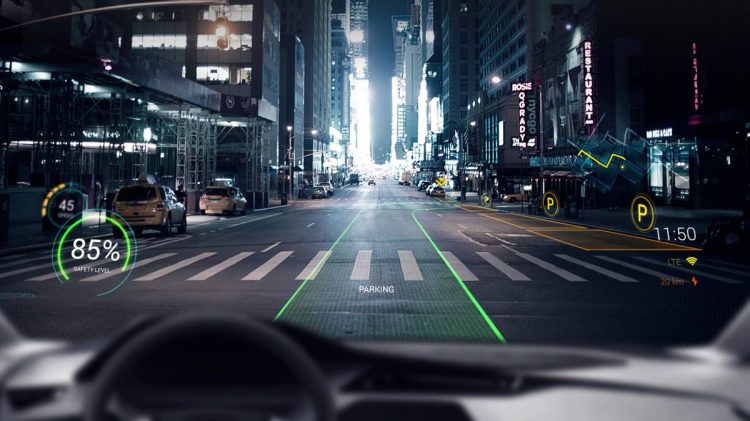Fully automated vehicles (AVs) — commonly known as driverless vehicles — are quickly becoming a reality. A study issued by the World Economic Forum projects 10 percent of vehicles in the U.S. will be driverless by 2026. This is due, in part, to enabling technologies making rapid gains in sophistication and adoption.
As we see these technologies evolve and grow, so will the amount of data both generated and demanded by AVs. Enter 5G, and the future of automated vehicles looks very bright.
Here’s how we think 5G could play a dynamic role in supporting technologies that enable AVs.
On-board sensors
Onboard sensors are arguably the most critical enabling technology. They are vital to helping automated vehicles make sense of their environment and surroundings. Onboard processing allows vehicles to take the data inputs from sensors and act on them to guide vehicles’ operations on the road. Radar, lidar, sonar, and video cameras have made automated vehicles possible using this data.
June 5th: The AI Audit in NYC
Join us next week in NYC to engage with top executive leaders, delving into strategies for auditing AI models to ensure fairness, optimal performance, and ethical compliance across diverse organizations. Secure your attendance for this exclusive invite-only event.
The capacity and performance we expect with 5G networks will create additional opportunities for features and functionality. 5G standards are being designed to provide enhanced connectivity for AVs, with factors such as low latency, high speed mobility, high data speeds, and high capacity. These factors will allow key data from sensors to be effectively communicated to the cloud, thus enabling capabilities that go beyond what the onboard processing in a single vehicle could accomplish.
V2V and V2I communications
Vehicle-to-vehicle (V2V) and vehicle-to-infrastructure (V2I) communications will also be coming to both human driven vehicles and highly automated vehicles in the coming years. This will allow AVs to “see” and receive data directly from other vehicles and road infrastructure beyond what their onboard sensors can perceive — around corners, through other vehicles, and at longer distances.
Complementary to the onboard sensors, these additional data streams paired with sensor inputs will paint a more robust picture of the road and traffic environment around the automated vehicle. This will provide a much higher degree of confidence in AVs. 5G technologies such as ultra-high reliability and low latency will allow AVs to receive the information they need to make real-time decisions based on real-time information that goes beyond the individual sensors onboard the vehicle itself.
Beyond these automated driving improvements, additional information such as detailed mapping data, software and firmware updates, and cybersecurity enhancements will all be delivered to AVs far more quickly and efficiently by 5G networks.
Predictive learning technology
One of the most exciting aspects of automated vehicles is their ability to learn from other vehicles’ driving experiences in ways that human drivers simply cannot. The algorithms that govern AV operation can be continually improved as automated vehicles encounter new driving situations.
For those improvements to be made, however, data must be collected from AV encounters, to be analyzed and synthesized into improved algorithms to then be distributed to other vehicles.
The automated vehicles must be connected to do this. Tomorrow’s 5G will ensure faster and more efficient exchange of this data, enabling these automated vehicles to distribute and receive data and, ultimately, to function even better.
5G standards
Telecom and technology companies alike are collaborating around 5G standards efforts. In fact, initial lab trials are already achieving speeds up to 14 gigabits per second (Gbps) over a pre-standards fixed wireless 5G connection. With standards-based 5G technology potentially rolling out as early as late 2018, it is expected that 5G-enabled enhancements will come online and grow just about the same time automated vehicles begin hitting the roads. Once deployed, 5G networks and whatever the future might hold after 5G will be in use for a long time, likely able to support automated vehicles well into the future.
While we push forward to the day where we have 5G, we are also addressing current connected car challenges, such as road safety and traffic congestion. Other advancements include testing facilities and connected proving grounds to further accelerate the development of automated vehicles. Proving grounds offer access to a range of driving environments and infrastructure to test and evaluate self-driving car innovations.
As both the tech and telecom industries explore automated vehicles, it continues to become increasingly apparent how 5G mobile connectivity will be vital to support and complement both connected and automated vehicles. As we press onward, we’ll work to continue delivering safe, highly secure, and efficient solutions to ultimately bring automated vehicles to life.
Mike Troiano is vice president, IoT Solutions, at AT&T.

